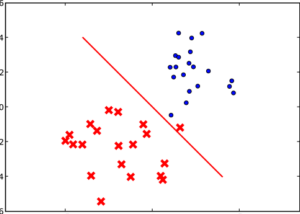Intelligence, usually associated with human endeavours, involves acts of interpretation, extrapolation, information synthesis and perception. Intelligence is how humans make sense of the world. Artificial intelligence, or AI, is the study and practice of making intelligent machines, that is machines capable of human-like perception, classification and beyond. While most people have heard of AI only recently, thanks to the wave of successful AI applications, AI research and its origin go back to the 1950s. The AI landscape is vast and can be confusing. Here for an infographic that offers a succinct overview of the field.
There is no concrete set of methods under the umbrella term of AI–it’s a fairly general word. From chatbots to smart personal assistants, and from machine learning to sentiment analysis, AI covers it all. Most of these concepts, however, are possible due to a set of techniques collectively called machine learning. Let us explore this magical field that powers most of modern-day AI.
Machine learning
Machine learning is a branch of computer science that focuses on giving computers the ability to learn from data without explicit instruction. It is reasonable to argue that computer programs lack an important ability–initiative. They perform exactly what they’re programmed to do, no less and no more. Contrast this to a five-year-old child who learns to distinguish a dog from a cat after seeing just a few examples. It turns out programming a computer to recognise a cat is hard, mostly because a picture of a cat could come with innumerable variations–different backdrops, poses, species and so on. It is impossible to imagine writing a single set of instructions that would capture all these subtle variations. Enter machine learning.
Machine learning approaches the problem from a completely different perspective. Instead of programming explicitly, we give the computer lots of labelled data and the ability to utilise that data to learn from it. It’s roughly modelled on how humans learn–by example and not direct instruction. The exact details of even the simplest machine learning algorithm are pretty mathematical, but here’s an intuitive explanation. Imagine a dataset with two kinds of points, blue and red, which are roughly scattered on a plane in some pattern.

To learn how to separate the two classes of points, a programme only needs to calculate a separating boundary. After the algorithm is finished running, it delivers what is called a decision boundary–a line separating the two classes.

This type of problem, of distinguishing two or more types of objects, is actually surprisingly generalisable and a significant amount of machine learning literature is dedicated to solving it efficiently and correctly. For example, recognising the difference between a cat and a dog in a photo, detecting an object or identifying whether a given transaction is genuine or fraudulent, all these problems can be formulated as classification problems.
While AI and machine learning continue to be the buzzword of the decade, it is good to know the fundamentals at work in these fields and educate yourself on AI’s promise and limitations, the main one being that they learn from the data given and can’t learn the way we do.
To know more about how you can study AI and machine learning at the undergraduate level, get in touch with The Red Pen.
Ayush Sharma is a guest blogger for The Red Pen and studied computer science at the Massachusetts Institute of Technology. He is the founder and CEO of an early-stage startup that’s focused on stealth.





